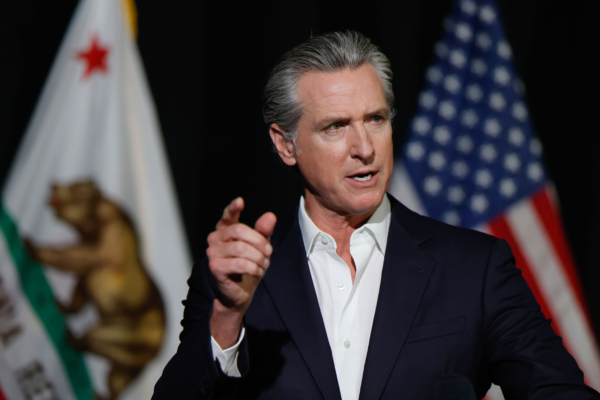California is facing another significant budget gap on the horizon, as projected by the state’s non-partisan Legislative Analyst’s Office (LAO). The LAO predicts that California’s deficit will approach $18 billion next year, describing the state’s financial situation as “relatively weak.”
According to a report released by the LAO on November 19, which is a preliminary look at the 2026-2027 fiscal year, California is expected to encounter a scenario of increasing debt, slowing economic growth, diminishing tools to address fiscal challenges, and running a deficit for the fourth consecutive year.
Despite a short-term boost in California’s financial condition from the surge in personal income tax revenue driven by the artificial intelligence (AI) boom, the report highlights a growing imbalance between California’s spending commitments and the necessary revenues.
Legislative Analyst Gabriel Petek stated to reporters during a briefing on the 19th, “The current budget situation has become relatively weak.” He noted that while tax revenues remain robust, almost all other indicators suggest that economic growth within the state is decelerating.
One of the reasons for California’s better-than-expected short-term financial revenue is the unusually strong stock market performance, largely propelled by investor enthusiasm for the AI industry and significant expenditures by tech firms on data centers and skilled professionals. Income tax revenue has shown double-digit percentage growth, and the compensation of employees in AI-related fields has significantly boosted taxable income.
However, the LAO warns that this surge may not be sustainable. The report points out signs of market overheating (elevated valuations, rising investor leverage, historically high household equity ownership), which echo unsustainable growth periods of the past.
Analysts from the LAO cautioned that the risk of the assumption that “the stock market will continue to rise” is extremely high, especially considering the possibility of a market correction leading to a sharp decrease in tax revenue. They stated, “Historically, these signs of overheating have often meant that the stock market will decline in the coming years.”
“Of course, this time could be different, and a decline might not materialize. However, the risks seem significant enough, with potentially severe implications for California’s budget, that we believe it should be factored into the state’s revenue outlook.”
Even with continued better-than-expected income tax revenue, California cannot use most of the additional revenue to cover next year’s deficit. Under the California Constitution, an increase in revenue automatically raises spending on public schools and community colleges, as stipulated in Proposition 98.
The LAO estimates that over 60% of the additional revenue, around $7 billion, must be allocated to educational expenses, including mandatory adjustments for the previous year’s underfunded payments.
Furthermore, Proposition 2 requires increasing reserve fund deposits and additional debt payments. This consumes most of the remaining additional funds, leaving limited discretionary income for addressing the deficit.
Additionally, California’s spending is expected to continue rising. The LAO estimates that expenditures for the 2026-2027 fiscal year will increase by nearly $6 billion beyond projections. Some of the reasons include rising costs of state pensions, retiree health benefits, and administrative overhead.
Another significant factor is the federal “Build Back Better” bill shifting additional financial responsibility for Medi-Cal and CalFresh programs to the state government. The LAO estimates that federal changes will bring about $1.3 billion in additional costs to California for these programs next year, with ongoing increases in the future.
Just before the finalization of the LAO report, federal officials released preliminary guidelines indicating that California may need to adjust certain provider taxes for medical services starting from July 2026, potentially further increasing state costs, which are not yet reflected in the LAO’s current estimates.
With constrained revenue growth and ongoing operational cost increases, the LAO predicts that California’s fiscal challenges will become more severe in the future. Starting from 2027, the state may face structural deficits of approximately $35 billion annually due to sustained expenditures outpacing revenues. In recent years, California has heavily relied on one-off measures to fill budget gaps, exacerbating the situation.
State lawmakers have previously used internal borrowing, deferred expenditures, or tapped into reserves of several billion dollars to bridge gaps. However, the LAO warns that these measures are nearly exhausted, and in the event of an economic slowdown or market cooling, the available financial tools will significantly diminish.
According to the report’s warning, “Currently, predicting larger deficits with fewer available tools, California’s budget undoubtedly will be ill-equipped to handle an economic downturn.”
The expanding budget gap signifies that Governor Gavin Newsom, who will step down in 2027, will face challenging hurdles when presenting his final state budget proposal in January next year.

